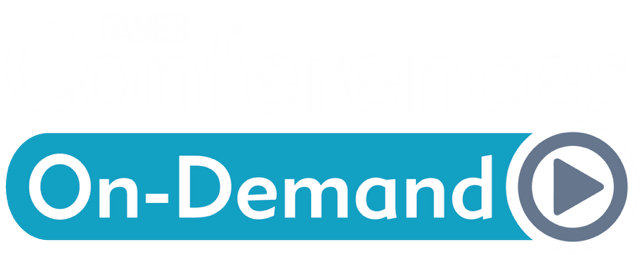All transcripts were created with artificial intelligence software and modified with manual review by a third party. Although we make every effort to ensure accuracy with the manual review, some may contain computer-generated mistranslations resulting in inaccurate or nonsensical word combinations, or unintentional language. FASEB and the presenting speakers did not review the transcripts and are not responsible and will not be held liable for damages, financial or otherwise, that occur as a result of transcript inaccuracies.
The Chromatin Reader SGF29 Is a Novel and Highly Selective Vulnerability in AML
Karina Barbosa1*, Anagha Deshpande1*, Marlenne Perales1, Ping Xiang2, Rabi Murad1, Pramod A. Bala1, Anna Minkina3, Neil Robertson4, Fiorella Schischlik5, Xue Lei1, Younguk Sun1, Adam Brown6, Diana Amend6, Irmela Jeremias6, John G. Doench7, R. Keith Humphries2, Eytan Ruppin5, Jay Shendure3, Prashant Mali8, Peter D Adams1, and Ani Deshpande1**1Sanford Burnham Prebys Medical Discovery Institute, La Jolla, CA 92037
2British Columbia Cancer Agency, Vancouver, BC, V5Z 1L3, Canada.
3 Department of Genome Sciences, University of Washington, Seattle, WA, USA
4 Beatson Institute for Cancer Research and the University of Glasgow, Glasgow, UK.
5 Cancer Data Science Laboratory, National Cancer Institute, National Institutes of Health, Bethesda, MD, 20892, USA.
6 Helmholtz Zentrum München, German Research Center for Environmental Health (HMGU), Munich, Germany
7 Broad Institute of Harvard and MIT, Cambridge, MA, USA.
8Department of Bioengineering, University of California, San Diego, San Diego, CA 92093, USA
* Equal contribution
Background and Aims: The mutational heterogeneity of acute myeloid leukemia (AML) presents a major challenge for identifying broadly applicable therapies. One common thread that ties together diverse mutational AML subtypes is the constitutive activation of transcriptional circuits enforcing a stem-like state. We sought to comprehensively identify epigenetic regulators that help AML cells sustain and propagate this stem-like state. Our focus was on chromatin readers – proteins that recognize specific chromatin modifications through highly structured, evolutionarily conserved domains. Given their central role in transcription, and the presence of eminently “druggable” interfaces, chromatin readers have gained prominence as attractive drug targets. A key challenge in cancer pharmacology is to identify which of these targets can be exploited as cancer-specific vulnerabilities.
Methods: We employed a series of multidisciplinary approaches including domain-focused CRISPR screens, CRISPR droplet sequencing, chromatin proteomics and epigenomics, which helped identify the chromatin reader – SGF29 as a novel therapeutic target in AML. SGF29 is a component of the Spt-Ada-Gcn5 acetyltransferase (SAGA), a multi-subunit complex with diverse transcriptional regulatory functions. The striking anti-leukemia effects of SGF29 inactivation were demonstrated using mouse models of diverse AML subtypes, human AML cell lines and PDX samples in vitro and in vivo.
Results: First, we deployed a CRISPR-Cas9 screen with a bespoke domain-focused epigenetics library and identified several novel chromatin-modifying complexes as regulators of the TALE domain transcription factor MEIS1, a key leukemia stem cell (LSC)-associated gene. CRISPR droplet sequencing revealed that many of the candidate MEIS1 regulators we had identified coordinately controlled the transcriptional activation of several AML oncogenes, including BMI1, MYC, SATB1 and the HOXA cluster genes. Our transcriptomic studies, arrayed CRISPR validation and computational analyses of dependency maps (DepMap) data showed that from our list of candidate genes - deletion of the chromatin reader SGF29 had some of the strongest anti-leukemia effects. In fact, SGF29 was the most highly leukemia-selective dependency in the DepMap dataset of 1,071 cancer cell lines, (Leukemia Vs. non-leukemia Wilcox Test FDR q-values of 3.75E-08), superseding other candidate hits including well-established, clinically tested epigenetic targets in AML. Strikingly, SGF29 deletion dramatically impaired the blast-colony forming ability of murine leukemia cells representing diverse AML subtypes (MLL-AF9, MLL-AF10, CALM-AF10), triggered differentiation as measured by uptake of fluorescent E. coli, increased apoptosis, and significantly increased leukemia latency in models of human cell line-derived (MOLM13, U937) and patient-derived (MLL-AF10) xenografts. Mechanistically, the tandem Tudor domain of SGF29 was important for its localization on chromatin, and for its leukemia-promoting activity. Overexpression of SGF29 with a single point mutation (SGF29D196R) abrogated blast-colony formation from MLL-AF9 AML cells. Since SGF29 is a chromatin reader that tethers chromatin modifying complexes including the ATAC and SAGA complex on chromatin, we performed chromatin enrichment followed by proteomics (ChEP) to identify proteins that are lost upon SGF29 deletion in human AML cells. Our studies revealed that SGF29 deletion led to the eviction of several AML oncoproteins, including MEIS1, HOXA13 and MYC- and importantly- of key SAGA complex components, including KAT2A/GCN5 and TADA3 from the chromatin fraction with a concomitant reduction in H3K9Ac on key AML oncogene loci.
Conclusions: Taken together, our studies reveal a novel role for SGF29 as a novel non-oncogenic dependency in AML and identify the SGF29 Tudor domain as an attractive target for drug discovery.
Funding: This work was supported by National Institutes of Health (NIH) National Cancer Institute grants CA262746 and P30 CA030199 and Luke Tatsu Johnson Foundation grant (Award number 22IC33) to AJD, and the Department of Defense Horizon Award number W81XWH-20-1-0703 to KB.
Speakers
Karina Barbosa
